[ Skywatchers ] [ Main Menu ]
47051
From: Eve, [DNS_Address]
Subject: Watch Thread for Sunspot coming round the bend that hurled big CME
|
I sat here and had lots of info in a post of various links and images and I got to looking so many places at various info and lost it...maybe will repost some of it later, till then here is the spaceweather.com copied in this post. Though the CME was not directed at Earth, I am curious to see if this CMS will influence the coronal hole wind that is coming to be earth facing...in the meantime waiting, watching sensing. Mercury solar conjunction on Jan. 7 and and Earth at perihelion (closest to the sun) Jan. 4. FARSIDE SOLAR EXPLOSION: Something just exploded on the farside of the sun. On Jan. 3rd at 1058 UT, the Solar and Heliospheric Observatory (SOHO) recorded a bright CME billowing over the sun's southeastern limb: 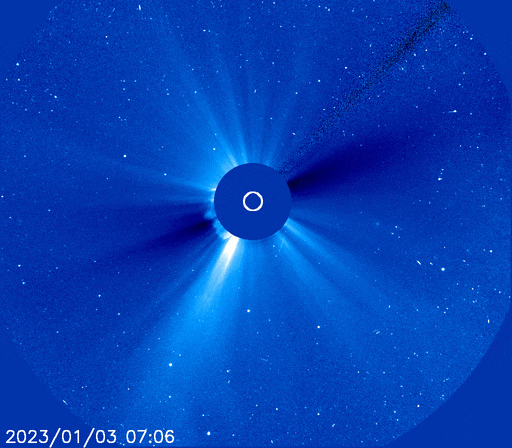 The source of the blast was probably old sunspot AR3163, which has spent the last two weeks transiting the farside of the sun. It is due to return on Jan. 4th. Helioseismic echoes suggest that the sunspot has grown since we last saw it in December. It may present a threat for significant Earth-directed flares after it re-appears tomorrow |
Responses:
[47052] [47053] [47054] [47055] [47056] [47061] [47062] [47063]
47052
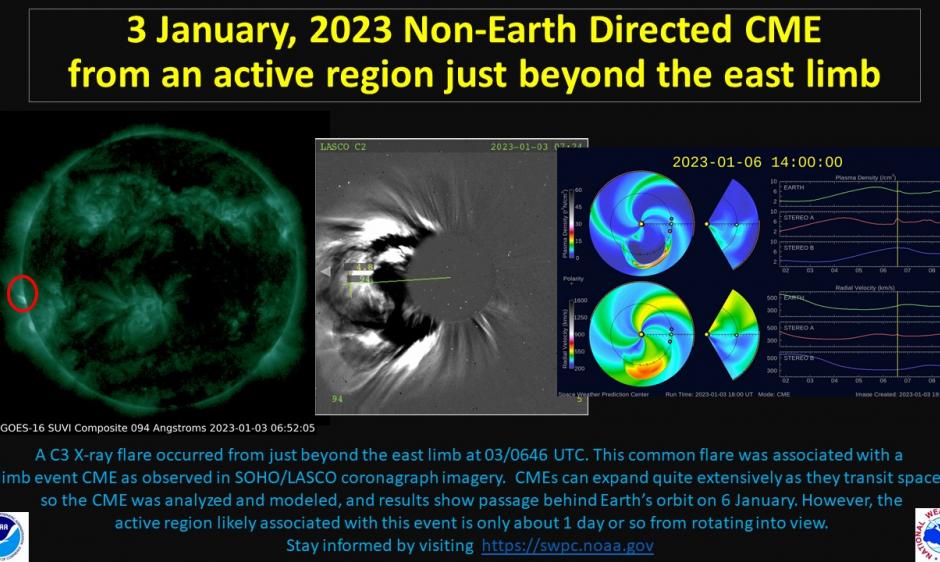
From: sheila, [DNS_Address]
Subject: Re: Watch Thread for Sunspot coming round the bend that hurled big...
URL: https://www.swpc.noaa.gov/news/3-january-non-earth-directed-cme-ar-beyond-east-limb
| thanks for the info eve. I found this on noahs home page. sorry cant type more. |
Responses:
[47053] [47054] [47055] [47056] [47061] [47062] [47063]
47053
From: Eve, [DNS_Address]
Subject: Re: Watch Thread for Sunspot coming round the bend that hurled big...
|
You're welcome sheila....The visual you posted is helpful as I have been questioning the incoming solar feels I have been receiving...helps me will keep in mind and watch for January 6th (which coincides with the Mercury inferior solar conjunction on January 7th). I had read a couple of places January 4th would be more visible but I was wondering if that was too soon. Unless the incoming solar feels subside for me by then, personally I am expecting and substantial CME from the region coming around the bend. |
47054
From: Eve, [DNS_Address]
Subject: Re: Watch Thread for Sunspot coming round the bend that hurled big...
URL: doomed comet tweet
|
The latest from spaceweather.com + helioviewer youtube clip of the sunspot coming round plus a comet. ~Eve FARSIDE SUNSPOT EMERGES: A sunspot that produced a significant farside explosion on Jan. 3rd is emerging over the sun's southeastern limb. Its planet-sized dark core is inset in this image from NASA's Solar Dynamics Observatory: 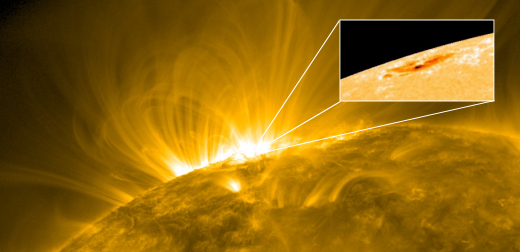 Although the sunspot is severely foreshortened and, probably, still partially hidden behind the edge of the sun, we know a lot about it. The Jan. 3rd blast shows it is capable of very strong flares (circumstantially X-class) and CMEs. It may even be an old friend--sunspot AR3163, which produced a fusillade of solar flares when it crossed the Earthside of the sun in December. A repeat performance may be in the offing. Stay tuned. https://spaceweather.com/ AIA 94 (2023-01-05 06:51:35 - 2023-01-05 12:50:47 UTC) ------------------------------------------------------------------------------------------------------------------------------------------------------------------------------------------------------------------------------------ + https://twitter.com/drkstrong Keith Strong @drkstrong 13h https://twitter.com/drkstrong DOOMED COMET: A tiny, faint comet plunges to its doom as it dives into the solar corona. It approaches from about 7 o'clock. You can see that it does not make very close to the Sun, evaporating into dust and gas before it even reaches the outer occulting disk. video clip here: https://twitter.com/i/status/1610810097030266881 |
47055
From: sheila, [DNS_Address]
Subject: X FLARE just now
| not even on IMSALS LIST YET. D REGION lit up big time. sure felt it. |
47056
From: Eve, [DNS_Address]
Subject: Re: X FLARE just now
|
Yep, was feeling that, feeling more in the works...I have been up all night mostly cleaning.... I made myself lay down to rest about noon and dozed off and on. Then I made myself get up in the evening did this and that and it was the first thing I checked was the noaa graphs when I got online... then I said to myself sheila is probably aware already and here you are :0) ~🌸~ Since I will most likely be up all night again I will watch for images and further activity, will post them if they become available. |
47061
From: Eve, [DNS_Address]
Subject: Re: X FLARE just now
|
https://www.swpc.noaa.gov/news/r3-radio-blackout-757-pm-edt-january-5-2023 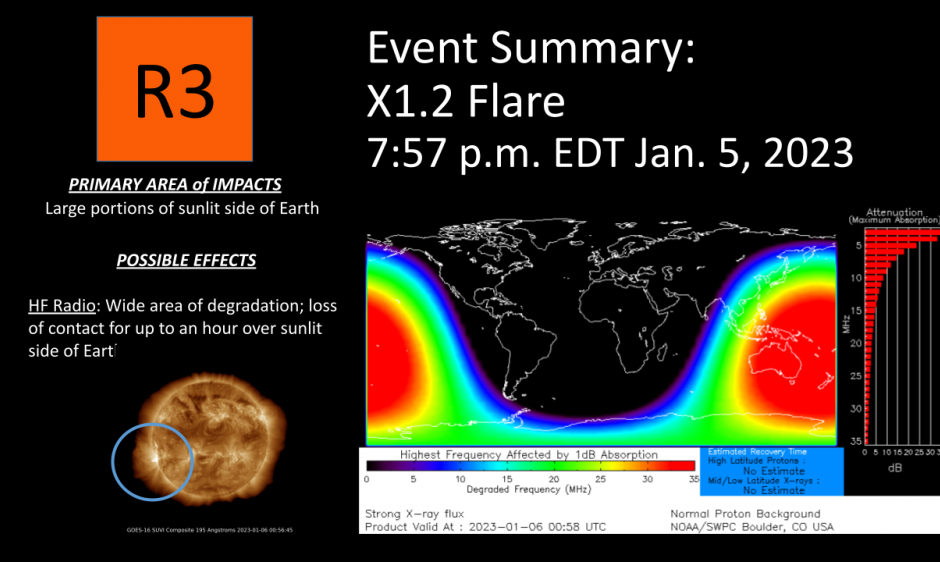 These short clips are a mite flashy not overly but so. https://www.youtube.com/watch?v=4zHq74GbTgE This shows Mercury entering solar conjunction: https://www.youtube.com/watch?v=yBNQkpLlWpI |
47062
From: Eve, [DNS_Address]
Subject: Re: X FLARE just now
URL: https://www.swpc.noaa.gov/communities/space-weather-enthusiasts-dashboard
|
current solar wind prediction visual: https://www.swpc.noaa.gov/communities/space-weather-enthusiasts-dashboard another helioviewer clip: https://www.youtube.com/watch?v=Wx8tSnCHlzE |
Responses:
[47063]
47063
From: Eve, [DNS_Address]
Subject: Re: X FLARE just now
|
This is my current understanding....Given that there was not a substantial coronal mass ejection with the X class flare on January 6th it is not expected that there will be a substantial geomagnetic storm.~Eve EXCERPT: A solar flare without a CME won't be capable of causing a large geomagnetic storm; one of the things that SOHO taught us is that that the Earth's magnetic field will protect us from normal solar flares extremely well, leading to a minor auroral event at most.Jan 31, 2020 This Multi-Trillion Dollar Disaster Is Coming, And Solar ... https://www.forbes.com/sites/startswithabang/2020/01/31/this-multi-trillion-dollar-disaster-is-coming-and-solar-astronomy-is-our-prime-defense/ -------------------------------------------------------------------------------------------------------------------------------------------------------------------------------------------------------------- X-CLASS SOLAR FLARE: Sunspot AR3182 is living up to the hype. Fully visible for less than 24 hours, the active sunspot has already produced an intense X1.2-class solar flare. NASA's Solar Dynamics Observatory recorded the eruption on Jan. 6th just before 0100 UT: 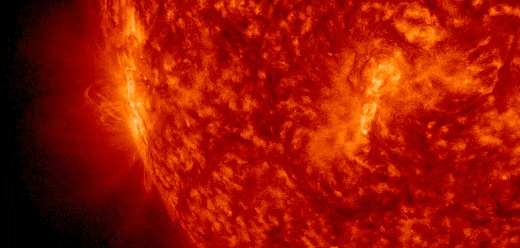 The explosion inflated a dome of glowing-hot plasma, which hovered above the blast site for more than an hour. This may have contained the debris. So far no coronal mass ejection (CME) has been observed emerging from the area. A pulse of X-rays and extreme UV radiation from the flare ionized the top of Earth's atmosphere, causing a shortwave radio blackout across South Pacific: 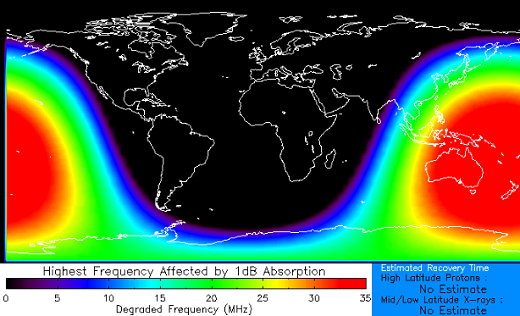 Ham radio operators, mariners and aviators may have noticed unusual propagation effects at frequencies below 30 MHz for as much as an hour after the flare. https://spaceweather.com/ |
Responses:
None
[ Skywatchers ] [ Main Menu ]